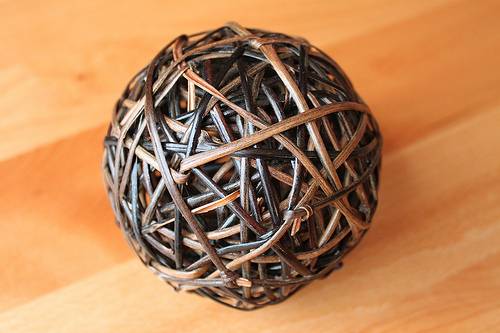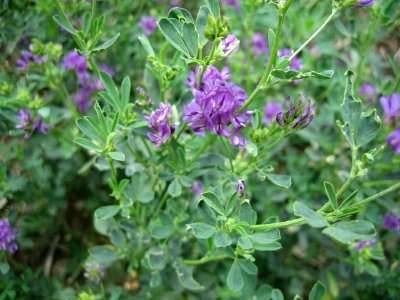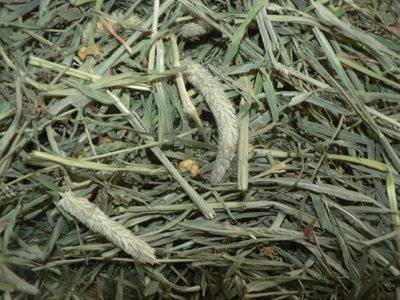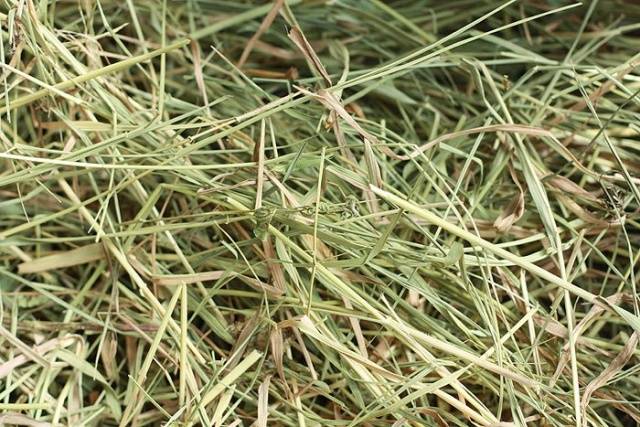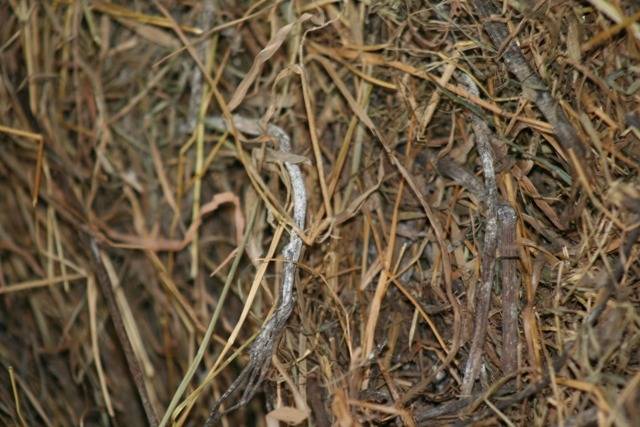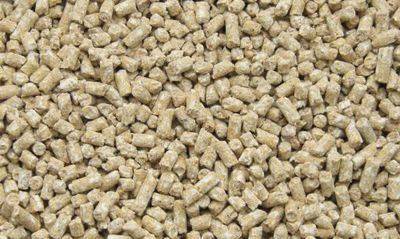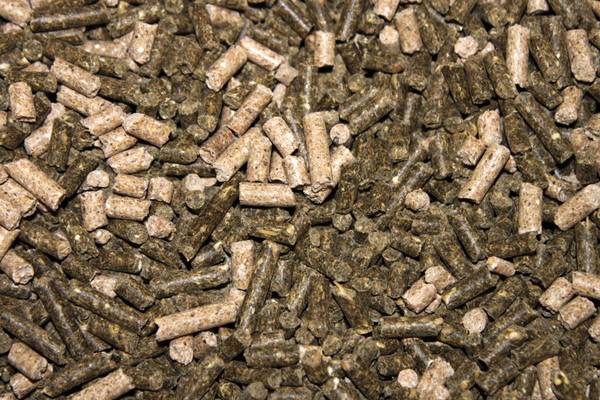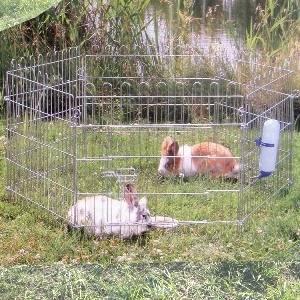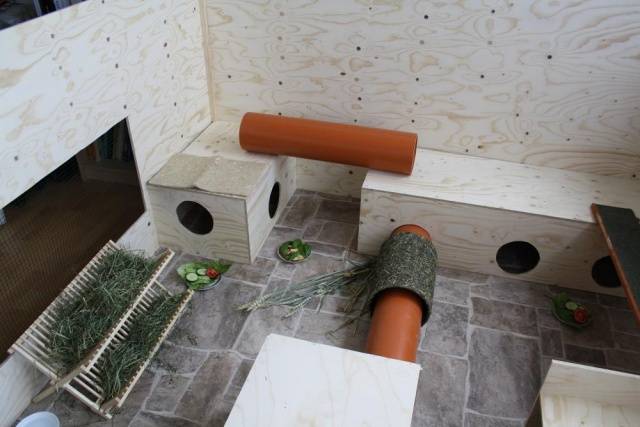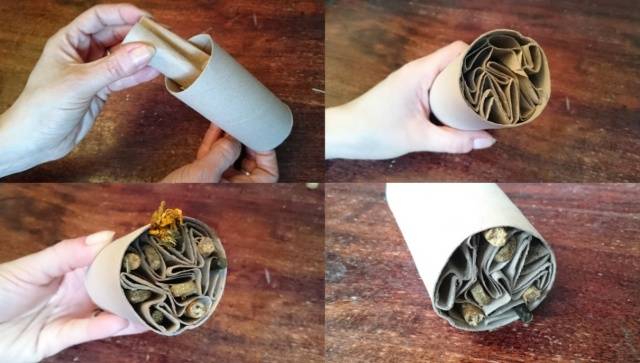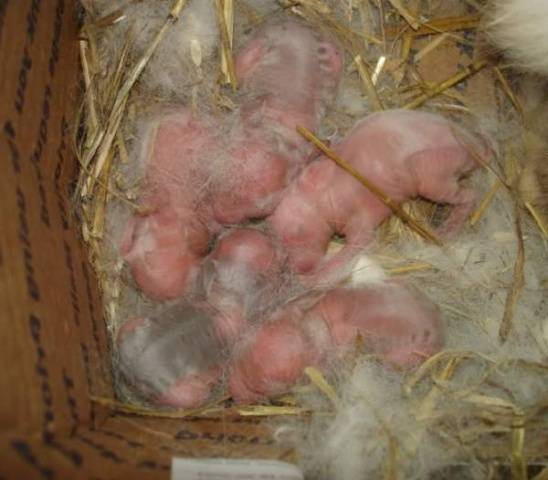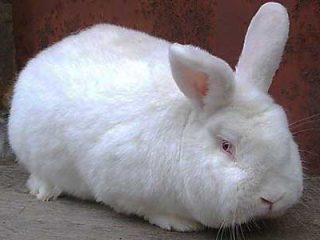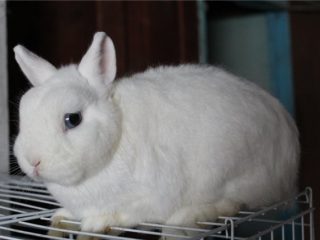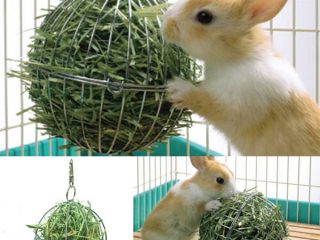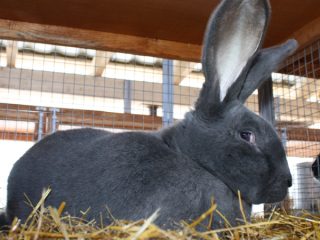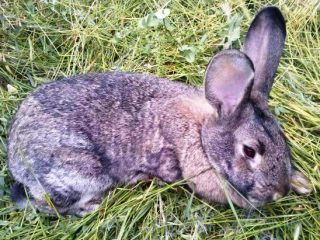Content
The theoretical life expectancy of rabbits is 10 – 12 years. But a wild rabbit in nature rarely lives to see 3. Diseases, parasites, and predators thin out the population. To preserve the species, such a rapid change of generations is the best strategy. On rabbit farms the situation is exactly the same. Of course, farmers do not allow infections and parasites to run rampant, and predators are kept at a distance, but keeping a female rabbit for more than 3 years is unprofitable, since her fertility decreases. Apparently, echoes of wild life. Therefore, older female rabbits are sent to slaughter. Only specimens that are especially valuable in a breeding sense survive to 4–5 years.
Owners decorative rabbits they want their pet to live as long as possible. How many years decorative rabbits live largely depends on the conditions of keeping and caring for them, but usually 6 – 10 years. And before buying, you need to find out how to care for a decorative rabbit and prepare a place for it to live.
Cage equipment and dimensions
Any rabbit breeds It is advisable to keep it on a solid non-slippery floor.The mesh used for raising industrial rabbits is not suitable for keeping decorative rabbits if you want to preserve their health for as long as possible. Pododermatitis, which occurs as a result of damage to rabbit feet when kept on a net, is not as harmless as it might seem. These are open wounds through which any infection can enter. At the same time, a smooth, slippery plastic floor is also not suitable for keeping a decorative rabbit. A textured tray or slatted floor is much better suited. It should be taken into account that not all decorative rabbits can be trained to use a tray. Perhaps any bottom with a thick layer of hay placed on it is what your decorative rabbit needs. The size of the cage is calculated based on the size of the intended breed. IN cage for decorative rabbit in a resting position, that is, stretched out on its side at full height, the decorative rabbit itself, its shelter, a manger for hay, a feeder, a drinking bowl and a tray should be placed. This is the necessary minimum for the life of a decorative rabbit.
If the exit from the cage is higher than the floor, you need to provide a safe ladder for the animal to enter and exit. Rabbits have very fragile paw bones. If the paw gets between the bars, and the animal gets scared at this time and jerks, a fracture will be guaranteed.
It is up to the owner to decide whether to equip the enclosure for longer “walks” of the decorative rabbit or to let it run around the room every day.
Otherwise, the decorative rabbit will live exactly until it bites through the wire connected to the electrical network.Caring for decorative rabbits is virtually no different from caring for industrial rabbits. Unless the cage needs to be cleaned more often to avoid odors in the house. If you want to keep more than one animal, but do not plan to breed decorative rabbits, it is better to take two female rabbits, they are more peaceful. Males will constantly start fights if they are not castrated. In addition, during puberty, the rabbit can show aggression towards the owner.
Decorative rabbits - care and feeding
Typically, the concept of “care and maintenance” includes not only feeding and cleaning the cage, but also satisfying the animal’s need for movement and play. And sometimes breeding.
Feeding
But with feeding everything is somewhat “worse”. If the owners want their pet to live as long as decorative rabbits that receive proper nutrition live, he will have to acquire knowledge not only in formulating a diet, but also in determining the quality of hay and concentrates.
Features of rabbit digestion
In rabbits, the passage of food masses through the intestines is carried out due to the arrival of new chewed food. In rabbits, their own intestinal peristalsis is very weak. Therefore, with long breaks in food intake, intestinal blockages may occur. Active running around with toys and jumping helps to improve peristalsis somewhat. But even here we must take into account the instinctive desire of the animal to gnaw everything that gets into its mouth. When eating large amounts of paper (owners often make free toys from cardboard boxes), plastic, rubber or fabric (stuffed toys), the chances of a blockage in the gastrointestinal tract increase.
Diet
The diet of a decorative rabbit should consist of high-quality hay and complete pellets specifically designed for these animals. Hay is the main component of a rabbit's diet. You can find many types of this product on sale. Often the type of hay depends on the region of residence. In one region, the bulk of hay comes from meadows, in another from irrigated crop fields. For decorative rabbits, timothy hay is considered the best type of hay. In second place is meadow herbs and in third place is alfalfa.
Since alfalfa is very high in protein, it can cause obesity in older rabbits.
How to determine the quality of hay
High-quality hay should be green in color with a pleasant herbal odor. You need to make sure that there are no rough “sticks” in the hay, although some decorative rabbits really like to chew on such sticks. But rough stems in hay mean that the hay was cut over-aged, with minimal vitamins and nutrients. The grass has already given everything useful to the seeds.
The ideal time to mow grass for hay is during the flowering period. This is the kind of hay you should try to find for your decorative rabbit.
The hay should not be overdried, as in this case the leaves and petals, the most valuable part of the hay, will fall off and the rabbit will only get the stems. However, if small parts fall off at home, they can be mixed with dry feed and fed to the animal.
Lower quality hay is yellow in color. During drying, such hay was exposed to rain and lost some of its nutritional value. But if there is no smell of mycelium, then the hay can be fed to the rabbit.
In fact, this is not dust, but mold spores. Contaminated with toxins released by mold, hay can lead to poisoning of the animal with symptoms of the famous “bloating”, well known to rabbit breeders.
Hay that should not be fed is brown in color and smells like mycelium. Such hay should be immediately sent to the trash bin.
If possible, you should ask what year the hay is being sold. Hay that dates back to the current year has the highest value. Hay that has been sitting for a year loses 50% of its nutritional value. Three-year-old hay is only suitable for bedding.
Compound feeds and granules
Essentially it's the same thing. Granules are pressed feed. Granules can be complete, that is, the animal needs nothing more than granules. But such granules will have to be constantly available in the feeder due to the digestive characteristics of rabbits. This will most likely lead to obesity, since proteins and carbohydrates in such granules are also in excess. Typically, such pellets are used for fattening rabbits on farms in addition to hay. Or if the hay is “empty”, that is, of low quality and containing almost no nutrients.
There are pellets produced specifically for decorative rabbits. When choosing pellets, you need to take into account the presence of hay in the diet. If for some reason it was not possible to get it and you have to make do with granules, you need to choose those with a fiber content of 20%.
If hay is present, the fiber content in the pellets should be 10–15%.
Determining the quality of granules
Any compound feed without preservatives should not be stored for more than a week, since during the production of the compound feed the grains are destroyed and the vitamins stored under the protective shell of the grain begin to decompose. Pellets sold in pet stores usually have a significant shelf life. This is achieved through the use of preservatives. However, the word “preservative”, which frightens many people, is in fact ascorbic acid, that is, vitamin C, necessary for the normal functioning of decorative rabbits.
When opening a package of granules, the contents should have a pleasant smell, without signs of rancidity. The granules contain oil-containing components: sunflower seeds or cake. If the contents of the package smell like rancid vegetable oil, it means that the shelf life has long expired and ascorbic acid has no longer been able to stop the decomposition of the vegetable oil.
Juicy feed
Theoretically, the decorative rabbit can eat many fruits and vegetables. From a practical point of view, it depends on how willing the owner is to put his animal at risk.
The idea that rabbits love cabbage and carrots is a myth. More precisely, rabbits love it. But when eating fresh white cabbage, they are guaranteed to die from fermentation of the cabbage in the stomach. White cabbage leaves should be dried.
Ornamental pets can only eat carrots half the size of an average root vegetable per day. And you need to start with a very small piece, since any new food is introduced a little at a time. It is very difficult to calculate this “a little bit” for a miniature ornamental animal.
An apple also causes fermentation in the intestines and is given in a dose of no more than a quarter per day.
Fresh grass must be dry, not after dew or rain, but preferably dried in the shade.
Red beets are also given carefully; they have a laxative effect.
You can give celery and parsley, a stalk of kale, zucchini, cucumber, and kohlrabi.
Everything is introduced slowly and issued every day, without a ragged schedule. But in order not to guess why the decorative rabbit is not feeling well today, it is better to limit yourself to hay and granules. Animals feel great on this diet throughout their lives. In addition, decorative rabbits are often allergic to any fruits or vegetables. The desire to treat your pet to something tasty is a purely human need and often ends in failure for the animal.
Physical activity
The lifespan of decorative rabbits largely depends on the conditions in which they find themselves. An animal that sits in a cage all its life does not live long. Decorative rabbits, like all herbivores that move a lot in search of food, need movement. At the same time, it is almost impossible to make a decorative rabbit run for the sake of the idea of running. This is unusual for animals. They prefer to save energy in case of attack by predators. But decorative rabbits need active physical movement and fresh air. Therefore, in private homes, walking a decorative rabbit is forced.A permanent enclosure is fenced off for him, into which the decorative rabbit can leave his shelter whenever he wants, and they are carefully monitored so that this figure does not undermine the passage to freedom. You can buy a portable version of the enclosure, which in fact is a cage with lattice walls. Such an enclosure is placed on the grass, and the decorative rabbit has the opportunity to eat the grass on its own. If he is accustomed to grass.
Another option for walking a decorative rabbit is a special lattice ball, which the animal rolls across the lawn, trying to move to another place. No, it is not suitable for places overgrown with weeds. Also, decorative rabbits are well accustomed to walking on a harness. In this case, you will have to follow your pet everywhere.
But not everyone has the opportunity to walk their decorative rabbits; many can only keep animals in an apartment. Keeping decorative rabbits at home should provide them with daily physical activity, and the owner will have to worry about this issue.
To prevent your pet from getting bored alone, it must be provided with toys. These can be specially made toys or homemade products. You can keep the animal busy getting food from a toy or developing its intelligence. However, the development of intelligence will still be based on obtaining food.
Homemade toys can include floor brushes made from natural materials, rugs and ropes woven from plant fibers, drainpipes, cardboard boxes and toilet paper tubes. Although the last two types are undesirable due to the danger of overeating paper. In principle, almost any thing can serve as a toy for a decorative rabbit.
But the owner will have to provide the physical activity of the decorative rabbit independently. At the same time, training a decorative rabbit to jump and follow commands.
If decorative rabbits were purchased with an eye to breeding, then you will have to take additional care of some factors.
Breeding decorative rabbits
Naturally, for breeding you need at least a pair of different-sex animals. Although in reality I would rabbit 3-4-5 rabbits. The rabbit will not refuse. Accordingly, you will have to take care of purchasing at least two cages so that the rabbit and the female rabbit live separately. The rabbit is a sexually anxious animal, and will not give a quiet life to the pregnant rabbit if they have one cage for two.
The cage of the female rabbit should be larger than that of the rabbit. She still has a brood to raise. A shelter must be placed in the cage. Before breeding, hay or straw is placed in the shelter.
The female rabbit will make the nest herself. Pregnancy lasts about a month. The female rabbit does not require any special assistance when giving birth. Yes, this is impossible, given the size of the rabbit.
In most cases, eating rabbits occurs because the rabbit is thirsty. To a lesser extent from a lack of minerals during pregnancy.
It is better to leave decorative rabbits with their mother for up to 3 months. On farms, rabbits are weaned at 30–45 days. At this same time, the maximum mortality of baby rabbits occurs, since their gastrointestinal tract is not yet developed enough to consume only “adult” food.If it is possible to suckle a female rabbit for up to 2 months, the mortality rate of the rabbits is minimal. After two months, the rabbit begins to drive them away on her own. Another month is needed to understand that “we are adults now and must live independently” and the rules of life in society.
A three-month-old decorative rabbit will already be able to adapt normally to another home.
Puberty in rabbits occurs at 3 months, so the breeder at this time already places the males separately from the females (plus 2 cages) and tries to quickly sell the rabbits.
The female rabbit comes into heat within a couple of days after giving birth. But it shouldn’t happen at this time. Condensed litters negatively affect the health of the rabbit. It is better to carry out a new mating after one and a half to two months.
Therefore, if you take decorative rabbits for breeding and do not want to sterilize them, you will have to constantly breed the animals. Otherwise, decorative rabbits will inevitably develop diseases of the reproductive system. Moreover, both the rabbit and the female rabbit. Thus, in order for decorative rabbits to live a long time, up to 10 years, and without significant health problems, the owner will have to not only comply with the standards for keeping and feeding decorative rabbits, but also entertain them with walks. Having a pet is a responsibility.

